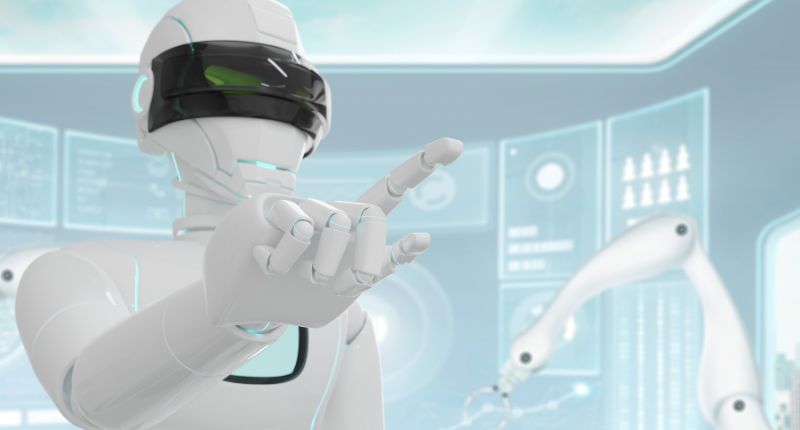In today’s hyper-connected world, where everything from banking to healthcare relies on digital infrastructure, cybersecurity has become a cornerstone of modern life. Yet, as technology evolves, so do the threats that target it. Cyberattacks are growing more sophisticated, leaving individuals and businesses vulnerable to data breaches, ransomware, and identity theft. Enter artificial intelligence (AI)—a game-changing tool that’s revolutionizing how we defend against cyber threats.
But how exactly does AI fit into the cybersecurity puzzle? Can it truly outsmart hackers, or is it just another buzzword? In this comprehensive guide, we’ll explore the intersection of AI and cybersecurity, uncover its strengths and limitations, and provide actionable steps to safeguard your data in an increasingly perilous digital landscape.
The Growing Cybersecurity Crisis
Before diving into AI’s role, it’s critical to understand the scale of the problem we’re facing.
- Cybercrime is skyrocketing: According to Cybersecurity Ventures, global cybercrime costs are projected to reach $10.5 trillion annually by 2025—up from $3 trillion in 2015.
- Attacks are more sophisticated: Gone are the days of easily spotted phishing emails. Today’s threats include AI-powered malware, deepfake scams, and zero-day exploits.
- Human error remains a weak link: Over 80% of breaches involve compromised credentials or human mistakes, like clicking malicious links.
Traditional cybersecurity measures—firewalls, antivirus software, and manual monitoring—are no longer enough. This is where AI steps in, offering speed, scalability, and adaptability that humans alone can’t match.
How AI is Transforming Cybersecurity
AI isn’t just a tool; it’s a paradigm shift in threat detection and response. Here’s how it’s making waves:
1. Proactive Threat Detection
Traditional systems rely on known threat signatures, but AI uses machine learning (ML) to analyze patterns and predict risks. By sifting through vast datasets—network traffic, user behavior, historical attacks—AI identifies anomalies that might indicate a breach. For example:
- Unusual login times or locations
- Spikes in data transfers
- Suspicious file encryption (a sign of ransomware)
Companies like Darktrace use AI to create a “self-learning” model of normal network activity, flagging deviations in real time.
2. Automating Responses
When a threat is detected, every second counts. AI-powered systems can:
- Isolate infected devices
- Block malicious IP addresses
- Patch vulnerabilities automatically
This reduces response times from hours to milliseconds, minimizing damage.
3. Phishing and Fraud Prevention
AI analyzes email content, sender behavior, and metadata to spot phishing attempts. For instance, Google’s TensorFlow ML models block 100 million phishing emails daily. In finance, AI detects fraudulent transactions by comparing them to typical user spending patterns.
4. Vulnerability Management
AI scans software code for weaknesses, predicts which vulnerabilities are most likely to be exploited, and prioritizes patches. Tools like IBM’s Watson for Cybersecurity cut the time needed to identify and address risks by up to 60%.
5. Combating Deepfakes and Disinformation
Generative AI can create hyper-realistic fake videos (deepfakes) to manipulate stock markets or spread propaganda. Fortunately, AI is also fighting back: startups like Deeptrace use algorithms to detect inconsistencies in audio, video, and metadata.
The Double-Edged Sword: AI’s Limitations and Risks
While AI is a powerful ally, it’s not a silver bullet. Here are key challenges to consider:
1. Adversarial Attacks
Hackers are weaponizing AI to bypass defenses. For example:
- Evasion attacks: Slightly altering malware code to fool AI scanners.
- Poisoning attacks: Feeding corrupt data into ML models to skew their outputs.
2. Bias and False Positives
AI models trained on incomplete or biased data may overlook threats or flag legitimate activity as suspicious. In 2023, a major bank’s AI system mistakenly froze hundreds of accounts due to flawed behavioral analysis.
3. Overreliance on Automation
AI can’t replace human intuition. For instance, it might miss context-specific threats, like an employee downloading sensitive files before resigning.
4. Ethical and Privacy Concerns
AI’s data-hungry nature raises questions:
- How much user monitoring is acceptable?
- Who’s responsible if an AI system fails?
Organizations must balance security with privacy rights to avoid backlash.
Best Practices for Leveraging AI in Cybersecurity
To harness AI’s potential without falling into its pitfalls, follow these guidelines:
1. Adopt a Hybrid Human-AI Approach
Use AI to handle repetitive tasks (log analysis, threat hunting) while empowering human experts to investigate complex cases. For example, Microsoft’s Azure Sentinel combines AI alerts with human-driven incident response.
2. Prioritize Data Quality
AI is only as good as its training data. Ensure datasets are diverse, up-to-date, and free of biases. Regularly retrain models to adapt to new threats.
3. Implement Zero Trust Architecture
Pair AI with a Zero Trust framework, where no user or device is trusted by default. Continuously verify identities and limit access to sensitive data.
4. Stay Ahead of Adversarial AI
Invest in tools that detect adversarial attacks, like Robust Intelligence, and conduct regular penetration testing to identify weaknesses.
5. Educate Employees
Even the best AI can’t fix human error. Train staff to recognize phishing attempts, use strong passwords, and report suspicious activity.
Real-World Success Stories
Case Study 1: JPMorgan Chase
The banking giant uses AI to analyze 12 billion data points daily, reducing false positives by 50% and cutting response times by 70%. Their ML models also predict phishing campaigns before they launch.
Case Study 2: CrowdStrike
CrowdStrike’s Falcon Platform leverages AI to stop ransomware attacks in seconds. During the 2023 MOVEit breach, Falcon detected and neutralized zero-day exploits that traditional tools missed.
Case Study 3: NHS (UK National Health Service)
After a devastating ransomware attack in 2017, the NHS deployed AI to monitor patient data access. The system red-flagged a nurse accessing unrelated records, uncovering an insider threat.
The Future of AI in Cybersecurity
The race between cyber defenders and attackers will only intensify. Here’s what to expect:
- Quantum AI: Quantum computing could break current encryption, but quantum-resistant AI algorithms are already in development.
- AI-Powered Cyber Insurance: Insurers will use AI to assess companies’ risk profiles and customize premiums.
- Ethical AI Regulations: Governments will likely impose standards to prevent misuse, similar to the EU’s upcoming AI Act.
How to Protect Yourself Today
While enterprises invest in advanced tools, individuals can take simple steps:
- Enable multi-factor authentication (MFA) on all accounts.
- Use a password manager like 1Password or Dashlane.
- Install AI-driven antivirus software (e.g., Cylance or Bitdefender).
- Avoid public Wi-Fi for sensitive transactions.
- Regularly update software to patch vulnerabilities.
Conclusion: Embracing AI as a Cybersecurity Partner
AI isn’t here to replace cybersecurity professionals—it’s here to amplify their capabilities. By automating routine tasks, predicting threats, and responding at machine speed, AI allows humans to focus on strategic defense. However, success hinges on ethical implementation, continuous learning, and collaboration across industries.
As cybercriminals grow more inventive, staying passive is not an option. Whether you’re a business leader or an everyday internet user, integrating AI into your cybersecurity strategy is no longer optional—it’s essential.
The digital age demands vigilance, innovation, and adaptability. With AI on our side, we’re better equipped than ever to protect what matters most: our data, our privacy, and our future.


